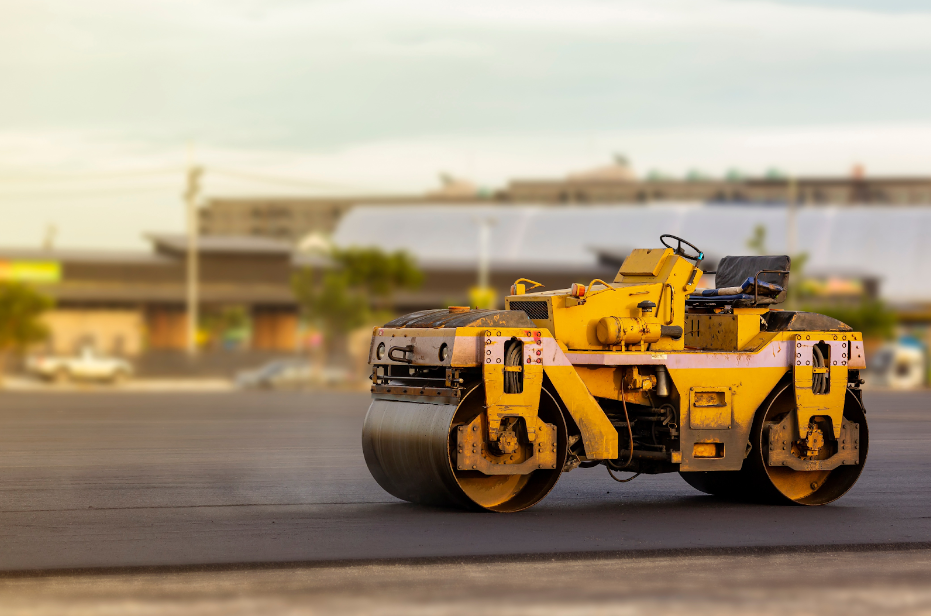A drum roller compactor is an invaluable tool in construction and landscaping, offering unmatched efficiency in soil compaction and asphalt paving. However, project managers sometimes face a dilemma when deciding between single and double drum rollers for specific project needs.
Single drum rollers work well in smaller, confined spaces, offering superior maneuverability. On the other hand, a double drum roller is ideal for larger, open areas where enhanced compaction efficiency becomes essential. Your choice should align with the project’s size and terrain for optimum results.
National Dispatching is your one-stop shop for steel drum roller and compaction solutions for various projects. In this blog post, we’ll delve into the key distinctions between single and double drum rollers and offer expert tips to help you choose the suitable options that suit your project requirements.
Brief Overview of Roller Compactor Types
Drum roller compactor systems are often used in various applications, such as machinery, conveyors, and material handling systems. The main differences between the two types of rollers are related to their design and functionality.
Single rollers are often used for lighter loads and applications where maneuverability is crucial. On the other hand, double rollers are preferred for heavier loads and applications where stability and load distribution are critical.
Single Drum Roller
A single drum roller is a compact construction machine with a large drum at the front or rear. Construction professionals use them for compacting soil, asphalt, or other materials.
These machines typically feature a smooth or padfoot drum for various compaction tasks, offering excellent traction. They are often chosen for ease of operation, maneuverability, and the ability to work efficiently in tight spaces. Applications include road construction, landscaping, and soil compaction projects.
Double Drum Roller
A double drum roller is a heavy machine featuring two large drums at the front and rear. Like the single drum variant, they are designed to compact soil, asphalt, and other materials.
Often used for initial compaction and a padfoot drum for finishing work, this type of heavy equipment is known for versatility, high compaction efficiency, exceptional stability, and smooth surfaces. Some of its applications include large-scale road construction, pavement projects, and heavy-duty compaction applications.
Comparison of Steel Drum Roller Types

Double and single-drum roller machines vary in function, features, capacity, and applications. Consider the following details when comparing machine types for your project:
Number of Rollers
- Single Rollers: As the name suggests, single rollers consist of a cylindrical barrel rotating around its axis. They are used when there is a need for a single point of contact with a surface.
- Double Rollers: Conversely, double rollers feature two parallel cylindrical rollers that rotate in tandem. They provide two points of contact with the material or surface. This design offers increased stability and load-bearing capacity compared to single rollers.
Load Capacity
- Single Rollers: These machines typically have a lower load-bearing capacity, suitable for applications where lighter loads are involved.
- Double Rollers: This type can handle heavier loads due to the added stability the additional roller provides, making it better suited for applications where strength and durability are essential.
Stability
- Single Rollers: Single rollers are generally less stable than double rollers because they have only one point of contact on any surface, making them more prone to tilting or wobbling.
- Double Rollers: They offer greater stability, making them more suitable for applications that require precision and steadiness.
Friction and Rolling Resistance
- Single Rollers: Single rollers have a higher rolling resistance than double rollers because the entire load is supported by a single point of contact, resulting in more friction.
- Double Rollers: The design allows this machine to distribute the load across two contact points, reducing rolling resistance and allowing for smoother movement. They’re also more efficient for rolling and conveying tasks.
Steering and Maneuverability
- Single Rollers: These machines are typically easier to steer and maneuver in specific applications where directional control is essential.
- Double Rollers: In contrast, dual rollers have more limited steering capabilities, making them better suited for straight-line or linear movement.
Advantages and Disadvantages of Double and Single Roller Machines

The choice between single and double drum configurations depends on the specific requirements of your project. Consider the type of material to be compacted, the available space, and the desired compaction efficiency. Here are the pros and cons of each machine type:
Single Drum Roller Pros
- Maneuverability: They are highly maneuverable, making them suitable for compacting areas with limited access.
- Versatility: They can be used for various compaction tasks, including roadwork, landscaping, and soil compaction.
- Ease of Operation: These machines are often easier to operate, making them suitable for experienced operators and those new to the equipment.
- Lower Initial Cost: These machines are typically more affordable to purchase or rent than larger double drum rollers.
Single Configuration Cons
- Lower Compaction Efficiency: Single rollers may not achieve the same level of compaction as double drum rollers.
- Less Stability: Single drum rollers are generally less stable when used on uneven terrain.
Double Drum Roller Pros
- Higher Compaction Efficiency: Double drum rollers provide superior compaction results, leading to denser and more even compaction.
- Increased Stability: The dual drum design offers better stability, making them suitable for larger and more demanding compaction tasks.
- Faster Work: Double drum rollers are the better choice to get jobs done faster. They often cover more ground quickly, making them efficient for large-scale projects.
Cons of Using a Double Drum Configuration
- Less Maneuverable: Due to its sheer size, weight, width, and design, a double drum roller tends to be bulkier and less maneuverable. This feature can be a disadvantage when maneuvering.
- Higher Operating Cost: These machines are generally more expensive to purchase or rent. In addition, the maintenance costs may also be higher.
- Specialized Use: Double drum rollers are less versatile since they are primarily designed for heavy-duty compaction. They can be used in fewer applications compared to single-configuration rollers.
Jobs for Single Drum Rollers
These machines are valued for their maneuverability and precision, making them suitable for projects where access is limited or where compacting small to medium-sized areas is required.
- Creating even stable surfaces to construct sidewalks, driveways, and building foundations.
- Compacting soil for sports fields, parks, or landscaping projects for optimal grass growth and landscape features.
- Small-scale road construction or repair projects.
- Trench compaction or narrow excavation sites for utility installations like pipes and cables.
- Compacting gravel or aggregate for pathways, road shoulders, or other surfaces that don’t require extensive compaction.
- Parking lot construction, making exterior spaces suitable for vehicular traffic.
- Maintaining railroad tracks by compacting ballast and ensuring a stable foundation.
- Smaller patches or repairs on airport runways, where precise compaction is required.
- Concrete base preparation for industrial floors or slabs.
- Golf golf course construction, shaping greens, tees, and fairways.
Jobs for Double Drum Rollers
Double drum rollers are critical in projects that demand high compaction efficiency, speed, and the capacity to work on large areas. They are often used for the construction and maintenance of infrastructure. Here are some of the projects suitable for this type of machine:
- Large-scale road construction projects, where efficiency and uniform compaction are crucial.
- Compacting industrial yards, warehouses, and distribution centers.
- Landfill construction reduces the risk of environmental hazards.
- Dam construction compacts the earth or rock fill to ensure the dam’s structural integrity.
Work with Drum Roller Rental Specialists
National Dispatching is your go-to provider of high-quality steel drum roller machines, helping hundreds of contractors from a broad range of marketplaces since 1988. Call 559.705.2444 to speak to our specialists and get a quote.



